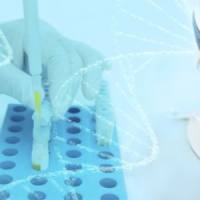Characterization of Mycoplasmas by PCR and Sequence Analysis with Universal 16S rDNA Primers
互联网
622
Ribosomes are present in all self-replicating cells and constitute their protein-synthesizing machinery. The ribosomes are composed of ribosomal proteins and ribosomal RNA (rRNA). Bacteria have three kinds of rRNA (5S, 16S, and 23S rRNA), and the genetic information of these molecules is organized in the genome in the form of rRNA operons. The nucleotide sequences of the rRNA molecules contain well-defined segments of different evolutionary variability, which in the 16S rRNA molecule are referred to as universal (U), semiconserved (S), and variable (V) regions (1 ). The universal regions are numbered U1–U8 from the 5′-terminus. A more refined model for the nucleotide substitution rates in bacterial rRNA was recently presented, and it was shown that the nucleotide substitution rates within one of the above regions can vary substantially (2 ). Ribosomal RNA has the same important function in the cell, irrespective of species, which means that the corresponding genes are under approximately the same evolutionary pressure. These properties together make sequence analysis of rRNA extremely suitable for phylogenetic (3 ) and evolutionary (4 ) studies.









